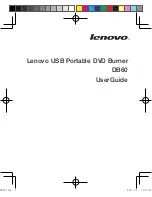
36
7.1.3 RESISTENZA
DI PRERISCALDO
In presenza di temperature ambienta-
li molto basse che causano un aumento
GHOOD YLVFRVLWj GHOO¶ROLR H QH RVWDFRODQR LO
corretto scorrimento, il riduttore può esse-
re equipaggiato con una o più resistenze
elettriche di preriscaldo ed un termostato
di minima atto a pilotarle. Esempi tipici di
possibili situazioni sono i seguenti:
ü
funzionamento a temperature inferiori
a 0°C
ü
DYYLDPHQWR GL ULGXWWRUL OXEUL¿FDWL DG
immersione e sbattimento qualora la
temperatura ambiente minima non
sia almeno 10°C superiore al punto di
VFRUULPHQWRGHOO¶ROLR
ü
DYYLDPHQWR GL ULGXWWRUL FRQ OXEUL¿FD]LR
-
QH IRU]DWD TXDORUD OD YLVFRVLWj GHOO¶ROLR
sia superiore a 1800 cSt (in funzione del
OXEUL¿FDQWHXWLOL]]DWRTXHVWRYDORUHVLUL
-
scontra indicativamente a temperature
ambiente comprese tra 10°C e 20°C)
La/le resistenze elettriche sono
inserite direttamente nel carter
sotto il livello dell’olio, prima di
estrarle è necessario svuotare il ridutto-
UHGHOOXEUL¿FDQWH
Il circuito elettrico collegato al termostato
deve essere impostato in modo tale che:
- al di sotto della soglia di temperatura
inferiore la/le resistenze siano attivate
SHUVFDOGDUHO¶ROLR
- al raggiungimento della soglia di tem-
peratura superiore la/le resistenze sia-
no disattivate
3HUODGH¿QL]LRQHGHOODGHOOHVRJOLHGLWHP
-
peratura, eventualmente coincidenti e da
YDOXWDUHLQIXQ]LRQHGHOO¶DSSOLFD]LRQHHGHO
WLSR GL OXEUL¿FDQWH XWLOL]]DWR FRQWDWWDUH LO
6HUYL]LR7HFQLFRGL%RQ¿JOLROL
Tutti i collegamenti elettrici sono a
cura del Cliente e devono essere
HIIHWWXDWL SULPD GHOO¶DYYLDPHQWR
del riduttore.
Durante i periodi di fermo del ri-
duttore la resistenza deve rima-
nere spenta: va accesa prima del-
O¶DYYLDPHQWRGHOULGXWWRUHVRORVHFRPSOH
-
WDPHQWH LPPHUVD QHOO¶ROLR H OLPLWDWDPHQWH
per il tempo necessario al raggiungimento
della temperatura minima richiesta.
/¶XVR GHOOD UHVLVWHQ]D ROWUH LO YDORUH PDV
-
simo consigliato può creare una carboniz-
]D]LRQH GHOOH PROHFROH GHOO¶ROLR FRPSUR
-
mettendone la funzionalità e producendo
residui dannosi per il riduttore o per i suoi
componenti.
Qualora la/le resistenze si rivelino insuf-
¿FLHQWL D VFDOGDUH O¶ROLR DOOD WHPSHUDWXUD
PLQLPDULFKLHVWDSHUO¶DYYLDPHQWRRLOIXQ
-
zionamento oppure si desiderino tempi di
7.1.3 OIL HEATER
,Q VLJQL¿FDQWO\ ORZ DPELHQW WHPSHUDWXUHV
increased viscosity can prevent correct oil
ÀRZ ,Q VXFK FRQGLWLRQV WKH JHDU XQLW FDQ
be equipped with one or more electrical
heating elements and a minimum tempera-
ture thermostat to switch them on and off.
Examples of situations requiring oil heating
include:
ü
operation at temperatures below 0 C
ü
starting of gear units featuring oil bath
and splash lubrication if the minimum
ambient temperature is not at least
10°C higher than the oil drop point.
ü
starting of gear units with forced lubri-
cation when the oil viscosity is higher
than 1800 cSt (depending on the lu-
bricant used this value is reached at
ambient temperatures of between ap-
proximately 10°C and 20°C).
The heating elements are in-
stalled directly in the gear unit
casing, below the level of the
oil. The gear unit must therefore be
completely drained before the elements
can be removed.
The electrical circuit connected to the ther-
PRVWDWPXVWEHFRQ¿JXUHGVRWKDW
- the heating element/s is/are switched
on to heat the oil at temperatures be-
low the minimum threshold
- the heating element/s is/are switched
off when the oil temperature reaches
the upper threshold
&RQWDFW %RQ¿JOLROL¶V 7HFKQLFDO 6HUYLFH WR
determine the ideal temperature thresholds.
These may coincide with other thresholds
and in any case need to be determined on
the basis of the application and the type of
lubricant used.
All electrical connections are to
be made by the customer prior to
the startup of the gear unit.
The heater must remain discon-
nected during periods in which
the gear unit is not in use: the
heater must be switched on before the
gear unit is started, only when it is com-
pletely immersed in the oil, and only for the
time required for the oil to reach its mini-
PXP VSHFL¿HG WHPSHUDWXUH 7KH XVH RI
WKHKHDWHUIRUORQJHUSHULRGVWKDQVSHFL¿HG
can result in carbonisation of the oil mol-
ecules, impairing lubrication performance
and producing residues that are harmful to
the gear unit and its components.
,IWKHQRUPDOKHDWHUVLVDUHLQVXI¿FLHQWWR
heat the oil to the minimum temperature re-
quired for startup or operation, or if shorter
ZDUPXSWLPHVDUHUHTXLUHGFRQVXOW%RQ¿
-
7.1.3 VORWÄRME-HEIZWIDER-
STAND
Bei äußerst niedrigen Umgebungstempera-
turen, die eine Zunahme der Viskosität des
Öls verursachen und dessen Fließeigen-
schaften beeinträchtigen, kann das Getriebe
mit einem oder mehreren elektrischen Vor-
wärme-Heizwiderständen und einem Min-
desttemperatur-Thermostat für deren Ansteu-
erung ausgerüstet werden. Nachfolgend eini-
ge typische Beispiele möglicher Situationen:
ü
Betrieb bei Temperaturen unter 0°C;
ü
Starten von Getrieben mit Tauch- und
Ölspritzschmierung, wenn die niedrigste
Umgebungstemperatur nicht mindestens
10°C über dem Fließpunkt des Öls liegt;
ü
Starten von Getrieben mit Zwangs-
schmierung, wenn die Viskosität des
Öls über 1800 cSt liegt (je nach ver-
wendetem Schmiermittel ist dieser
Wert in der Regel bei Umgebungstem-
peraturen zwischen 10°C und 20°C
anzutreffen).
Der/die
elektrische/n
Heizwi-
derstand/-stände ist/sind direkt
im Gehäuse installiert und voll-
ständig im Öl eingetaucht; vor dessen/
deren Ausbau muss das Schmieröl aus
dem Getriebe abgelassen werden.
Der am Thermostat angeschlossene Strom-
kreis ist entsprechend auszulegen, sodass:
- beim Absinken der Temperatur unter
die untere Schwelle der/die Wider-
stand/-stände eingeschaltet wird/wer-
den, um das Öl zu erwärmen;
- beim Erreichen der oberen Tempera-
turschwelle der/die Widerstand/-stän-
de ausgeschaltet wird/werden.
Zur Bestimmung der eventuell zusammen-
fallenden und auf Grundlage der Applika-
tion sowie des verwendeten Schmiermit-
teltyps zu bewertenden Temperaturschwel-
le/n ist der technische Kundendienst von
%RQ¿JOLROL]XNRQWDNWLHUHQ
Für alle elektrischen Anschlüsse,
die vor der Inbetriebnahme des
Getriebes ausgeführt werden
müssen, hat der Kunde zu sorgen.
Während den Stillstandzeiten des
Getriebes muss der Widerstand
ausgeschaltet sein: Dessen Ein-
schaltung ist vor dem Start des Getriebes
auszuführen, und zwar nur, wenn er voll-
ständig im Öl eingetaucht ist; die Einschalt-
dauer ist auf die notwendige Zeit zum Errei-
chen der erforderlichen Mindesttemperatur
begrenzt. Bleibt der Widerstand länger als
empfohlen in Betrieb, ist eine Karbonisati-
on der Ölmoleküle nicht auszuschließen,
die die Funktion des Öls beeinträchtigt und
schädliche Rückstände für das Getriebe
und dessen Komponenten erzeugt.
Reicht/Reichen der/die Widerstand/-stände
nicht aus, um das Öl auf die erforderliche
Mindesttemperatur für den Start bzw. Betrieb
zu erwärmen, oder sollen die Erwärmungs-
Содержание HDP 100
Страница 2: ......
Страница 53: ...51...
Страница 55: ......
Страница 56: ...INDUSTRY PROCESS AND AUTOMATION SOLUTIONS w w w b o n f i g l i o l i c o m HDP...
















































